Emanuele Bugliarello
Dynamic Classifier-Free Diffusion Guidance via Online Feedback
Sep 19, 2025Abstract:Classifier-free guidance (CFG) is a cornerstone of text-to-image diffusion models, yet its effectiveness is limited by the use of static guidance scales. This "one-size-fits-all" approach fails to adapt to the diverse requirements of different prompts; moreover, prior solutions like gradient-based correction or fixed heuristic schedules introduce additional complexities and fail to generalize. In this work, we challeng this static paradigm by introducing a framework for dynamic CFG scheduling. Our method leverages online feedback from a suite of general-purpose and specialized small-scale latent-space evaluations, such as CLIP for alignment, a discriminator for fidelity and a human preference reward model, to assess generation quality at each step of the reverse diffusion process. Based on this feedback, we perform a greedy search to select the optimal CFG scale for each timestep, creating a unique guidance schedule tailored to every prompt and sample. We demonstrate the effectiveness of our approach on both small-scale models and the state-of-the-art Imagen 3, showing significant improvements in text alignment, visual quality, text rendering and numerical reasoning. Notably, when compared against the default Imagen 3 baseline, our method achieves up to 53.8% human preference win-rate for overall preference, a figure that increases up to to 55.5% on prompts targeting specific capabilities like text rendering. Our work establishes that the optimal guidance schedule is inherently dynamic and prompt-dependent, and provides an efficient and generalizable framework to achieve it.
What Are You Doing? A Closer Look at Controllable Human Video Generation
Mar 06, 2025Abstract:High-quality benchmarks are crucial for driving progress in machine learning research. However, despite the growing interest in video generation, there is no comprehensive dataset to evaluate human generation. Humans can perform a wide variety of actions and interactions, but existing datasets, like TikTok and TED-Talks, lack the diversity and complexity to fully capture the capabilities of video generation models. We close this gap by introducing `What Are You Doing?' (WYD): a new benchmark for fine-grained evaluation of controllable image-to-video generation of humans. WYD consists of 1{,}544 captioned videos that have been meticulously collected and annotated with 56 fine-grained categories. These allow us to systematically measure performance across 9 aspects of human generation, including actions, interactions and motion. We also propose and validate automatic metrics that leverage our annotations and better capture human evaluations. Equipped with our dataset and metrics, we perform in-depth analyses of seven state-of-the-art models in controllable image-to-video generation, showing how WYD provides novel insights about the capabilities of these models. We release our data and code to drive forward progress in human video generation modeling at https://github.com/google-deepmind/wyd-benchmark.
PaliGemma 2: A Family of Versatile VLMs for Transfer
Dec 04, 2024



Abstract:PaliGemma 2 is an upgrade of the PaliGemma open Vision-Language Model (VLM) based on the Gemma 2 family of language models. We combine the SigLIP-So400m vision encoder that was also used by PaliGemma with the whole range of Gemma 2 models, from the 2B one all the way up to the 27B model. We train these models at three resolutions (224px, 448px, and 896px) in multiple stages to equip them with broad knowledge for transfer via fine-tuning. The resulting family of base models covering different model sizes and resolutions allows us to investigate factors impacting transfer performance (such as learning rate) and to analyze the interplay between the type of task, model size, and resolution. We further increase the number and breadth of transfer tasks beyond the scope of PaliGemma including different OCR-related tasks such as table structure recognition, molecular structure recognition, music score recognition, as well as long fine-grained captioning and radiography report generation, on which PaliGemma 2 obtains state-of-the-art results.
PaliGemma: A versatile 3B VLM for transfer
Jul 10, 2024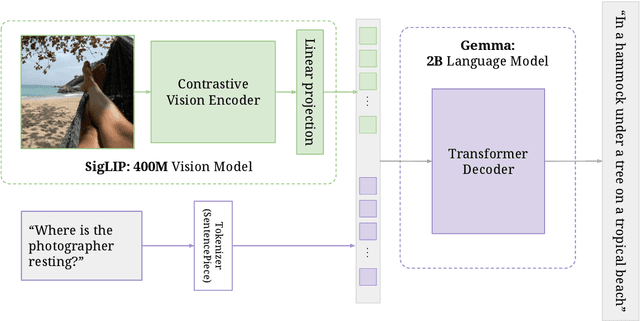
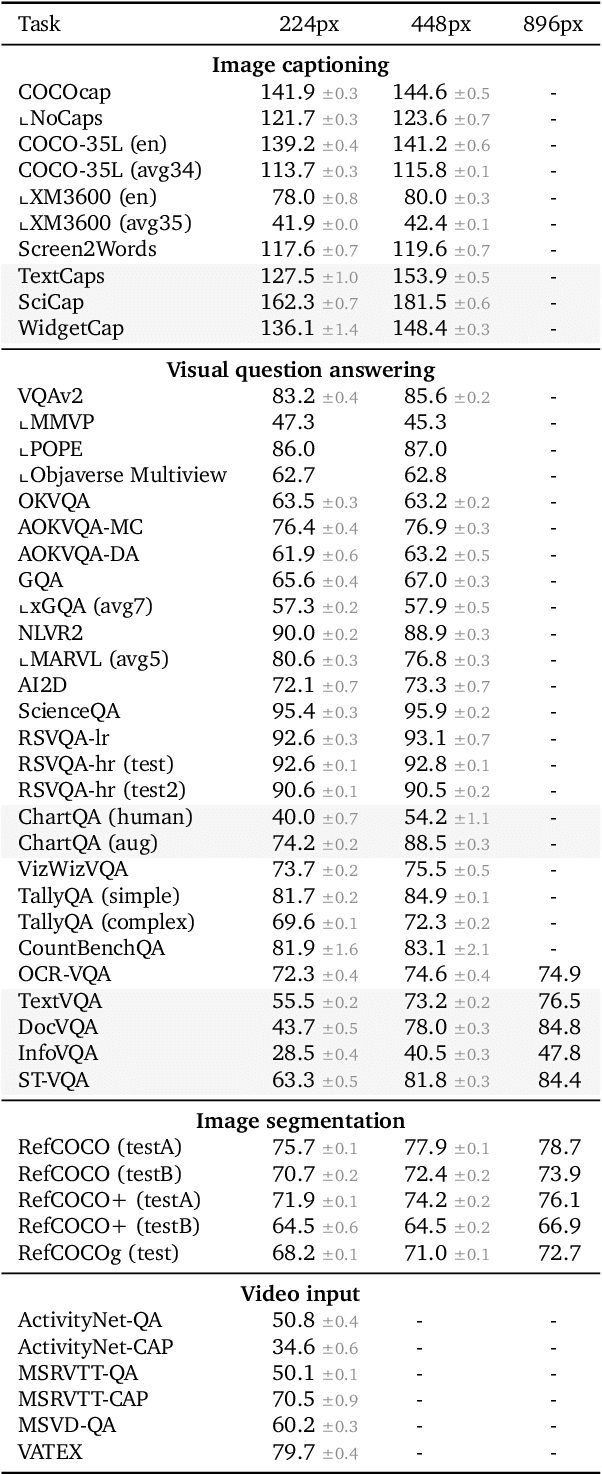
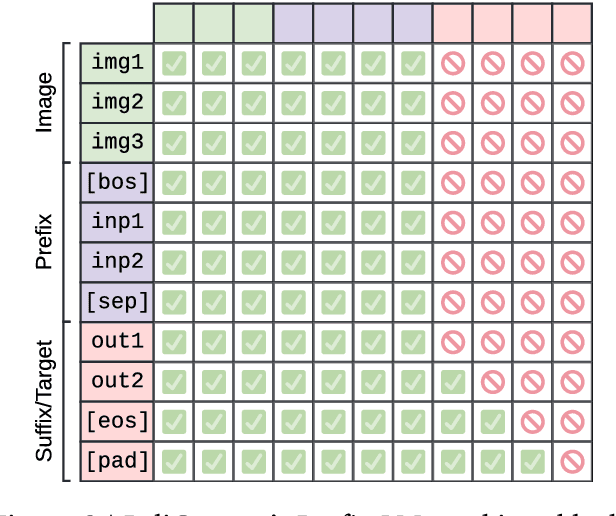
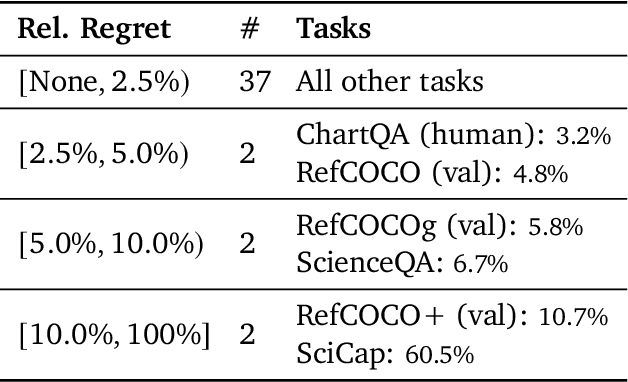
Abstract:PaliGemma is an open Vision-Language Model (VLM) that is based on the SigLIP-So400m vision encoder and the Gemma-2B language model. It is trained to be a versatile and broadly knowledgeable base model that is effective to transfer. It achieves strong performance on a wide variety of open-world tasks. We evaluate PaliGemma on almost 40 diverse tasks including standard VLM benchmarks, but also more specialized tasks such as remote-sensing and segmentation.
No Filter: Cultural and Socioeconomic Diversityin Contrastive Vision-Language Models
May 22, 2024Abstract:We study cultural and socioeconomic diversity in contrastive vision-language models (VLMs). Using a broad range of benchmark datasets and evaluation metrics, we bring to attention several important findings. First, the common filtering of training data to English image-text pairs disadvantages communities of lower socioeconomic status and negatively impacts cultural understanding. Notably, this performance gap is not captured by -- and even at odds with -- the currently popular evaluation metrics derived from the Western-centric ImageNet and COCO datasets. Second, pretraining with global, unfiltered data before fine-tuning on English content can improve cultural understanding without sacrificing performance on said popular benchmarks. Third, we introduce the task of geo-localization as a novel evaluation metric to assess cultural diversity in VLMs. Our work underscores the value of using diverse data to create more inclusive multimodal systems and lays the groundwork for developing VLMs that better represent global perspectives.
Revisiting Text-to-Image Evaluation with Gecko: On Metrics, Prompts, and Human Ratings
Apr 25, 2024Abstract:While text-to-image (T2I) generative models have become ubiquitous, they do not necessarily generate images that align with a given prompt. While previous work has evaluated T2I alignment by proposing metrics, benchmarks, and templates for collecting human judgements, the quality of these components is not systematically measured. Human-rated prompt sets are generally small and the reliability of the ratings -- and thereby the prompt set used to compare models -- is not evaluated. We address this gap by performing an extensive study evaluating auto-eval metrics and human templates. We provide three main contributions: (1) We introduce a comprehensive skills-based benchmark that can discriminate models across different human templates. This skills-based benchmark categorises prompts into sub-skills, allowing a practitioner to pinpoint not only which skills are challenging, but at what level of complexity a skill becomes challenging. (2) We gather human ratings across four templates and four T2I models for a total of >100K annotations. This allows us to understand where differences arise due to inherent ambiguity in the prompt and where they arise due to differences in metric and model quality. (3) Finally, we introduce a new QA-based auto-eval metric that is better correlated with human ratings than existing metrics for our new dataset, across different human templates, and on TIFA160.
MuLan: A Study of Fact Mutability in Language Models
Apr 03, 2024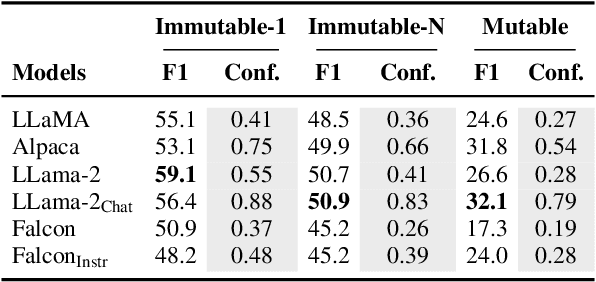
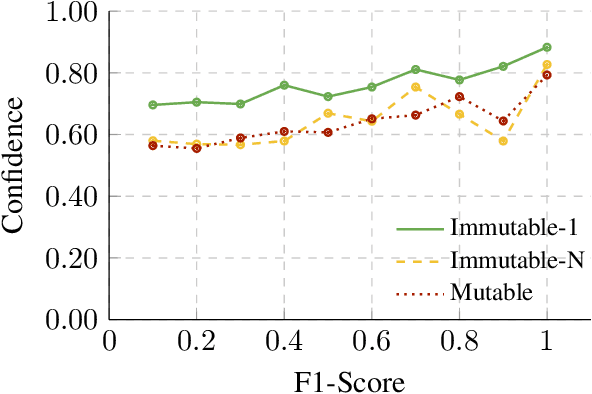
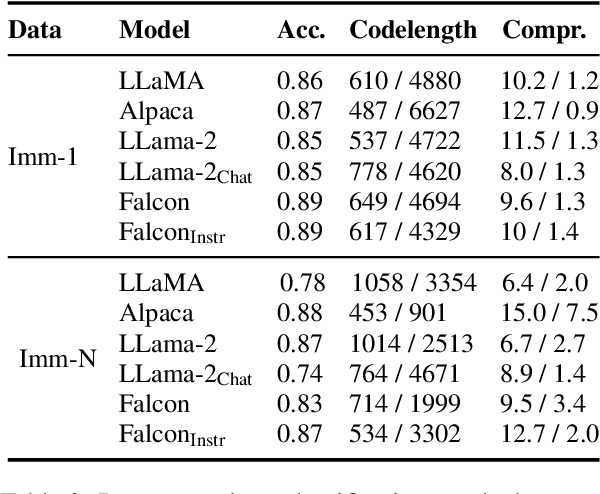
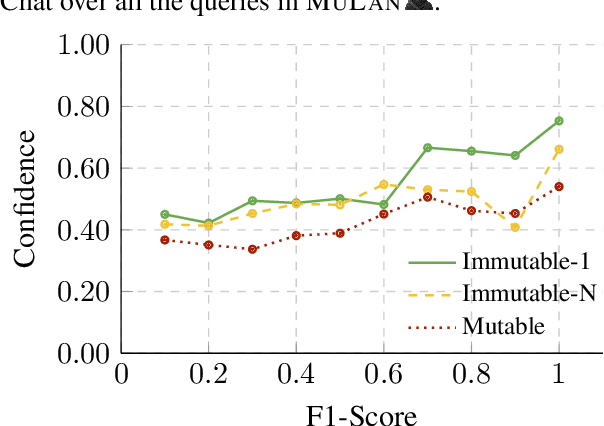
Abstract:Facts are subject to contingencies and can be true or false in different circumstances. One such contingency is time, wherein some facts mutate over a given period, e.g., the president of a country or the winner of a championship. Trustworthy language models ideally identify mutable facts as such and process them accordingly. We create MuLan, a benchmark for evaluating the ability of English language models to anticipate time-contingency, covering both 1:1 and 1:N relations. We hypothesize that mutable facts are encoded differently than immutable ones, hence being easier to update. In a detailed evaluation of six popular large language models, we consistently find differences in the LLMs' confidence, representations, and update behavior, depending on the mutability of a fact. Our findings should inform future work on the injection of and induction of time-contingent knowledge to/from LLMs.
Evaluating Bias and Fairness in Gender-Neutral Pretrained Vision-and-Language Models
Oct 26, 2023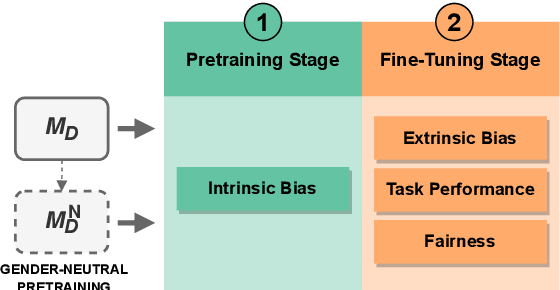
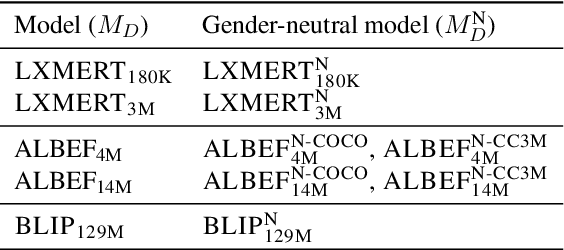
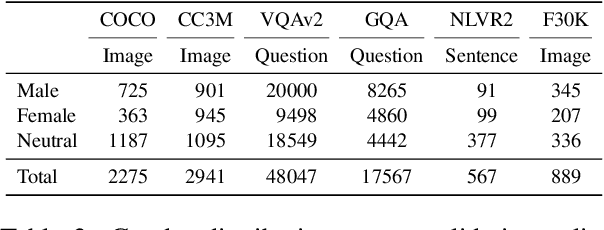
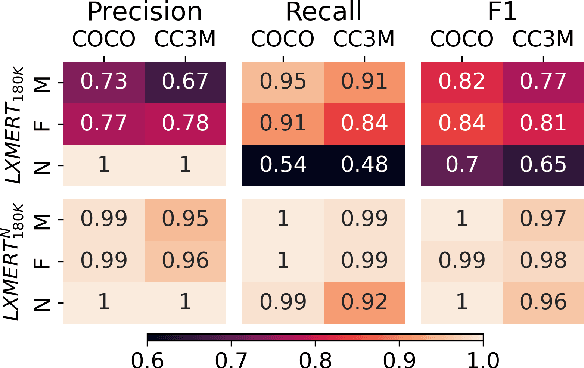
Abstract:Pretrained machine learning models are known to perpetuate and even amplify existing biases in data, which can result in unfair outcomes that ultimately impact user experience. Therefore, it is crucial to understand the mechanisms behind those prejudicial biases to ensure that model performance does not result in discriminatory behaviour toward certain groups or populations. In this work, we define gender bias as our case study. We quantify bias amplification in pretraining and after fine-tuning on three families of vision-and-language models. We investigate the connection, if any, between the two learning stages, and evaluate how bias amplification reflects on model performance. Overall, we find that bias amplification in pretraining and after fine-tuning are independent. We then examine the effect of continued pretraining on gender-neutral data, finding that this reduces group disparities, i.e., promotes fairness, on VQAv2 and retrieval tasks without significantly compromising task performance.
On the Interplay between Fairness and Explainability
Oct 25, 2023



Abstract:In order to build reliable and trustworthy NLP applications, models need to be both fair across different demographics and explainable. Usually these two objectives, fairness and explainability, are optimized and/or examined independently of each other. Instead, we argue that forthcoming, trustworthy NLP systems should consider both. In this work, we perform a first study to understand how they influence each other: do fair(er) models rely on more plausible rationales? and vice versa. To this end, we conduct experiments on two English multi-class text classification datasets, BIOS and ECtHR, that provide information on gender and nationality, respectively, as well as human-annotated rationales. We fine-tune pre-trained language models with several methods for (i) bias mitigation, which aims to improve fairness; (ii) rationale extraction, which aims to produce plausible explanations. We find that bias mitigation algorithms do not always lead to fairer models. Moreover, we discover that empirical fairness and explainability are orthogonal.
StoryBench: A Multifaceted Benchmark for Continuous Story Visualization
Aug 22, 2023



Abstract:Generating video stories from text prompts is a complex task. In addition to having high visual quality, videos need to realistically adhere to a sequence of text prompts whilst being consistent throughout the frames. Creating a benchmark for video generation requires data annotated over time, which contrasts with the single caption used often in video datasets. To fill this gap, we collect comprehensive human annotations on three existing datasets, and introduce StoryBench: a new, challenging multi-task benchmark to reliably evaluate forthcoming text-to-video models. Our benchmark includes three video generation tasks of increasing difficulty: action execution, where the next action must be generated starting from a conditioning video; story continuation, where a sequence of actions must be executed starting from a conditioning video; and story generation, where a video must be generated from only text prompts. We evaluate small yet strong text-to-video baselines, and show the benefits of training on story-like data algorithmically generated from existing video captions. Finally, we establish guidelines for human evaluation of video stories, and reaffirm the need of better automatic metrics for video generation. StoryBench aims at encouraging future research efforts in this exciting new area.
 Add to Chrome
Add to Chrome Add to Firefox
Add to Firefox Add to Edge
Add to Edge